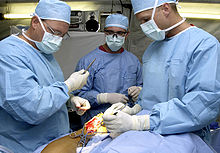Medical Malpractice is the third highest cause of death in the US
 251,000 people died from medical error in the US in 2013. This was the third highest cause of death that year in the US after cancer (585,000) and heart disease (611,000) according to estimates calculated by Martin A Makary, professor and Michael Daniel, research fellow at the Department of Surgery of Johns Hopkins University School of Medicine, Baltimore, MD 21287, USA.
251,000 people died from medical error in the US in 2013. This was the third highest cause of death that year in the US after cancer (585,000) and heart disease (611,000) according to estimates calculated by Martin A Makary, professor and Michael Daniel, research fellow at the Department of Surgery of Johns Hopkins University School of Medicine, Baltimore, MD 21287, USA.
In a recent article published in the British Medical Journal, Martin Makary and Michael Daniel explain the difficulty of obtaining the exact numbers of people dying from medical malpractice in the US and how they “analyzed the scientific literature on medical error to identify its contribution to US deaths in relation to causes listed by the CDC“.
Every year the Center for Disease Control and Prevention (CDC) compiles data from death certificates to prepare statistics related to causes of death in the U.S. On death certificates the cause of the death is coded according to an International Classification of Disease (ICD). The CDC is using the ICD codes to prepare its yearly statistics but these codes do not capture human or system errors. Deaths certificates from patients dying in hospitals will list a medical condition but not a medical error.
 New York Personal Injury Attorneys Blog
New York Personal Injury Attorneys Blog










